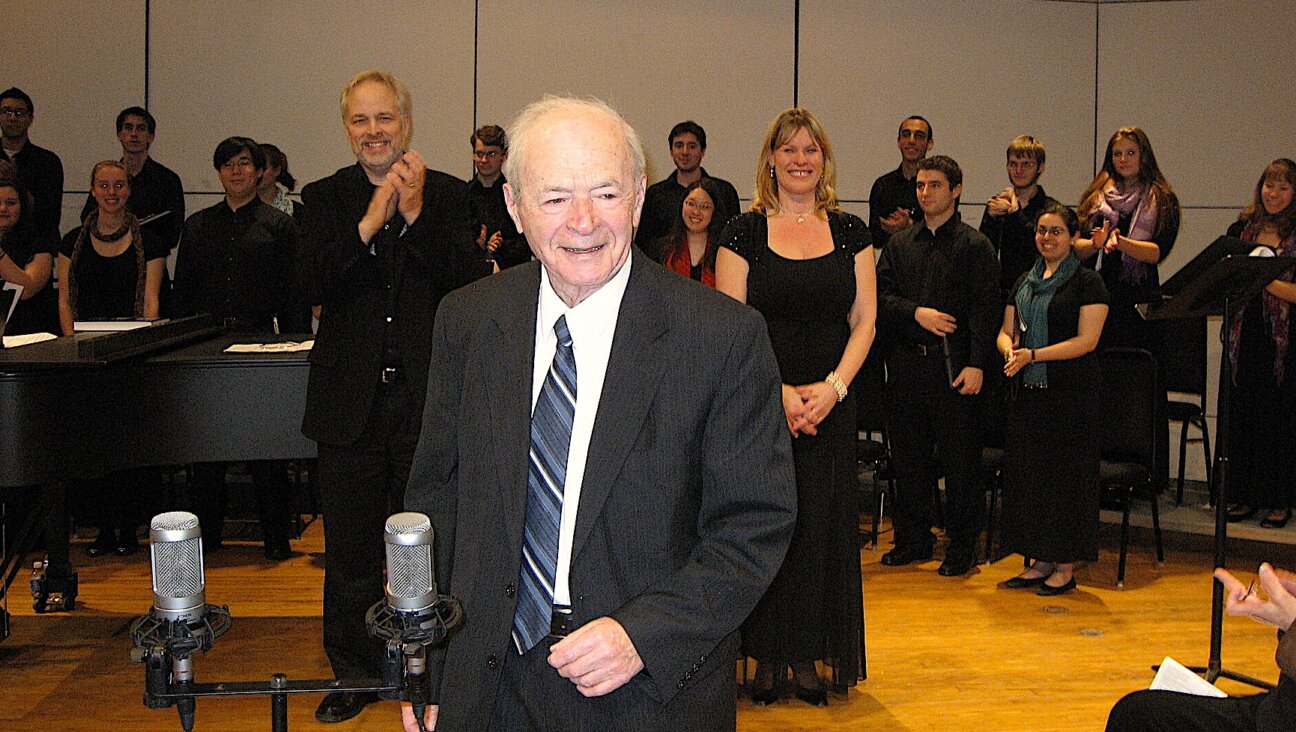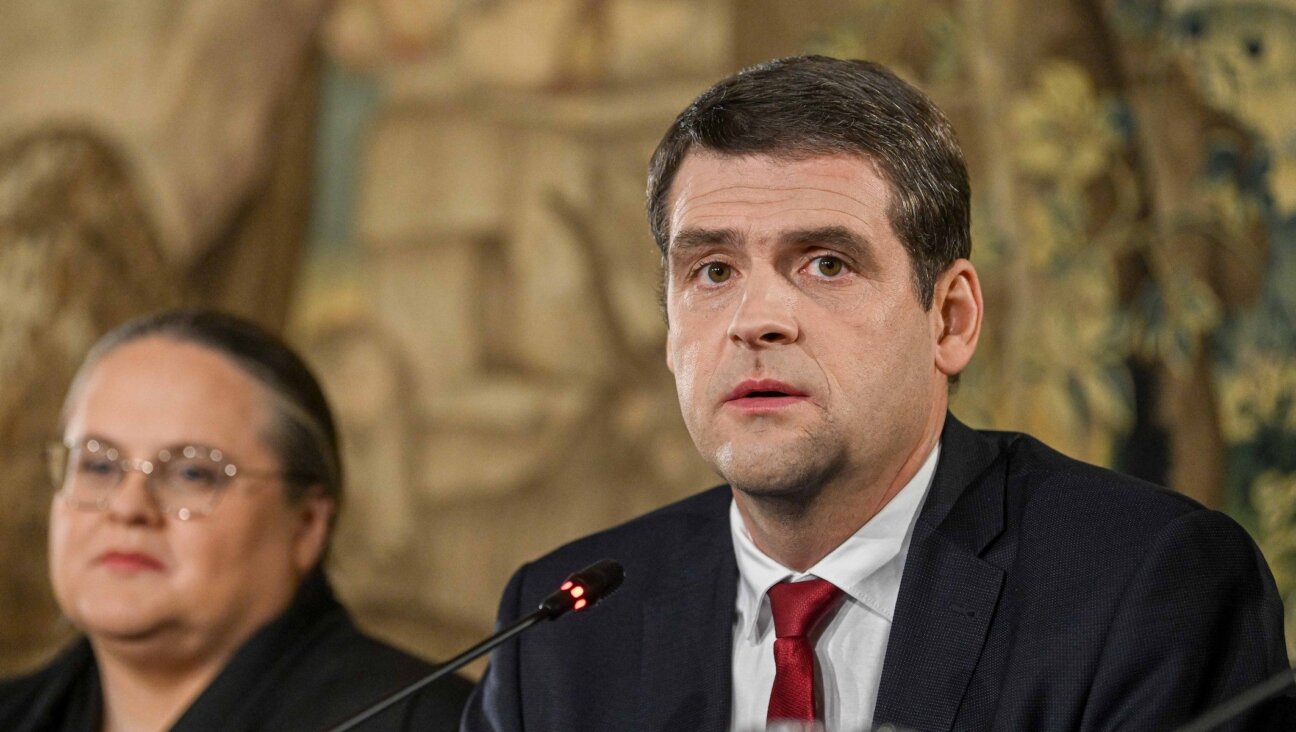The Secret Jewish History of Penicillin

Graphic by Angelie Zaslavsky
In the small country town of Castlebar, Ireland, you’ll find a road named after a German Jewish refugee and Nobel Prize winner, Bothar Sior Ernst Chain. Chain was awarded the Nobel for his work in developing penicillin. Sir Ernst Chain Road is a major road in the center of the small town. Visitors and local people often wonder: what was the connection between Chain and County Mayo?
Ernst Chain, born in Berlin, fled Germany for England in 1933 as the Nazis took power in Germany. He worked at Oxford, Cambridge and Imperial College London. Together with fellow chemist Howard Florey, he worked to make penicillin usable as a medicine. Chain, Florey and Fleming were all awarded the Nobel prize in 1945 in recognition of their discovery of a lifesaving drug. In 1969, Ernst Chain was knighted and bought a home in the remote village of Mullranny in County Mayo about 24 miles from Castlebar. He and his family had vacationed in the village for many years. He lived there for nine years until he died in Castlebar Hospital.
Chain’s old house is still owned by his family. He is still remembered in Mullranny, where resident and pub owner John Daly recalls that Chain drove a large Bentley and that such a vehicle had never been seen in the remote village. It’s hard to imagine what a sophisticated Berliner found in this remote western part of post-colonial Ireland, then probably the poorest country in Europe, but it is evident that he enjoyed his time in Mulranny. Certainly, he must have found beauty and solitude and may have seen for himself the remarkable transformation wrought in rural Ireland by the development and use of penicillin. Before its discovery, children died of diphtheria, pneumonia and infected tonsils. Farmers died from infections caused from injuries and women died from post childbirth infections. Official recognition of Chain’s work in England was not given until 2012. He was not honored in the same way as Alexander Fleming and Howard Florey, a fact he attributed to the rampant anti-Semitism he encountered at Oxford and Cambridge Universities where he did the pivotal work.
Ernst Chain is not Castlebar’s only link to Jewish history. There is another story that links two desperate communities: the impoverished people of Castlebar in newly independent Ireland and European Jews seeking to escape from Nazi dominated Europe. In 1938, the then minister of trade in Ireland, Sean Lemass, visited Europe seeking businesses that might relocate to the west of Ireland and provide business expertise and work opportunities for what was then a desolate part of the world racked by the scourges of unemployment and emigration. He attracted three Jewish owned businesses from France, Austria and what was then Czechoslovakia. A Polish Jewish businessman, Marcus Witzthun, who lived in Ireland accompanied Lemass and Irish Senator, John McEllin, and helped make contacts. Together they succeeded in bringing one complete business from Austria. Hirsch Ribbons relocated from Austria to Longford in County Roscommon. Hirsch brought everything with him from Austria and needed only factory premises. The military barracks, a remnant from Ireland’s colonial past, was leased to Mr. Hirsch for thirty years and official permission to work in Ireland granted. A French factory “Les Modes Modern” was relocated from Paris to County Galway. Nazi aggression had reached a point where those businesses would not be able to survive in countries that would shortly be overrun.
In 1940, the Castlebar hat factory “Western Hats” opened under the direction of Franz Schmolka, a Slovakian man. It was ceremonially opened by Sean Lemass (later the Irish Taioseach) and formally blessed by the Bishop of Galway. The factory operated totally on steam provided by turf, water and daylight. In the words of Ernie Sweeney, recollecting the days of the hat factory: “it would have delighted the green party of today since everything ran on steam that we created ourselves.” The factory was a local landmark with a chimney 100 feet tall. Over the years, it employed 270 people many of whom spent their entire working lives there. Relations were cordial. In 1946, when Franz Schmolka left Castlebar for Dublin the Connaught Telegraph published a piece stating how his many friends would regret his departure and praising his technical skills and his direction of the factory. In 1952, when Mr. Schmolka died in Dublin, t an extensive obituary detailing his military service in WW1 . In 1940, thirty Jewish families moved to Castlebar and most of them worked in the hat factory. They were from Czechoslovakia and formed a community in the Blackfort area of Castlebar known locally as “Little Jerusalem.”
Local Irish historian Ernie Sweeney comments: “It was not easy for them to move to the West of Ireland. We have learned from history that almost everything was for sale. Irish passports were also “for sale” in the 1930’s. The Czechoslovakian Jews were not made welcome just because they were nice people or because we were nice people or that that they were victims of an evil man called Hitler. They were made welcome and “assessed” on what they had to offer. but the end result was that a number of families moved into Castlebar. Neighbors and employees spoke of the Jewish people with regard.” Another perspective comes from Ivor Hamrock, research librarian at Mayo County Library who grew up near the hat factory and who provided a great deal of information for this study. He recalls two particular families, the Porges and the Polesies. Karl Polesi was a native of Lubenz in Czechoslovakia and the manager of the technical staff at the Castlebar Hat Factory.
He died in 1942 at the age of 44 and an extensive and respectful obituary was published describing his funeral. It seems that every local leader and politician attended and a genuine attempt was made to be culturally respectful. “On Tuesday, as a mark of respect to the memory of the deceased, a two-minute silence was observed at noon in the hat factory. The desk formerly occupied by the deceased was draped in black and bouquets of flowers were placed on it in observance of an old custom common on the Continent.” In 1946, Irish citizenship was given to Walter Porges and to Franz Dielenz. Mr. Dielenz and his wife returned to Germany in 1960 and published a letter in the Connaught Telegraph thanking the people of Castlebar for their “hospitality and excellent good humor” and for “always being so eager to help us through out little difficulties.” These families were able to escape the tragedy of the Holocaust and find sanctuary in Castlebar, and the Western Hat factory provided years of employment helping to relieve the overwhelming poverty in post-colonial Ireland during that era. Two communities in great need of help were able to give each other opportunity, sanctuary and, ultimately, survival.

















